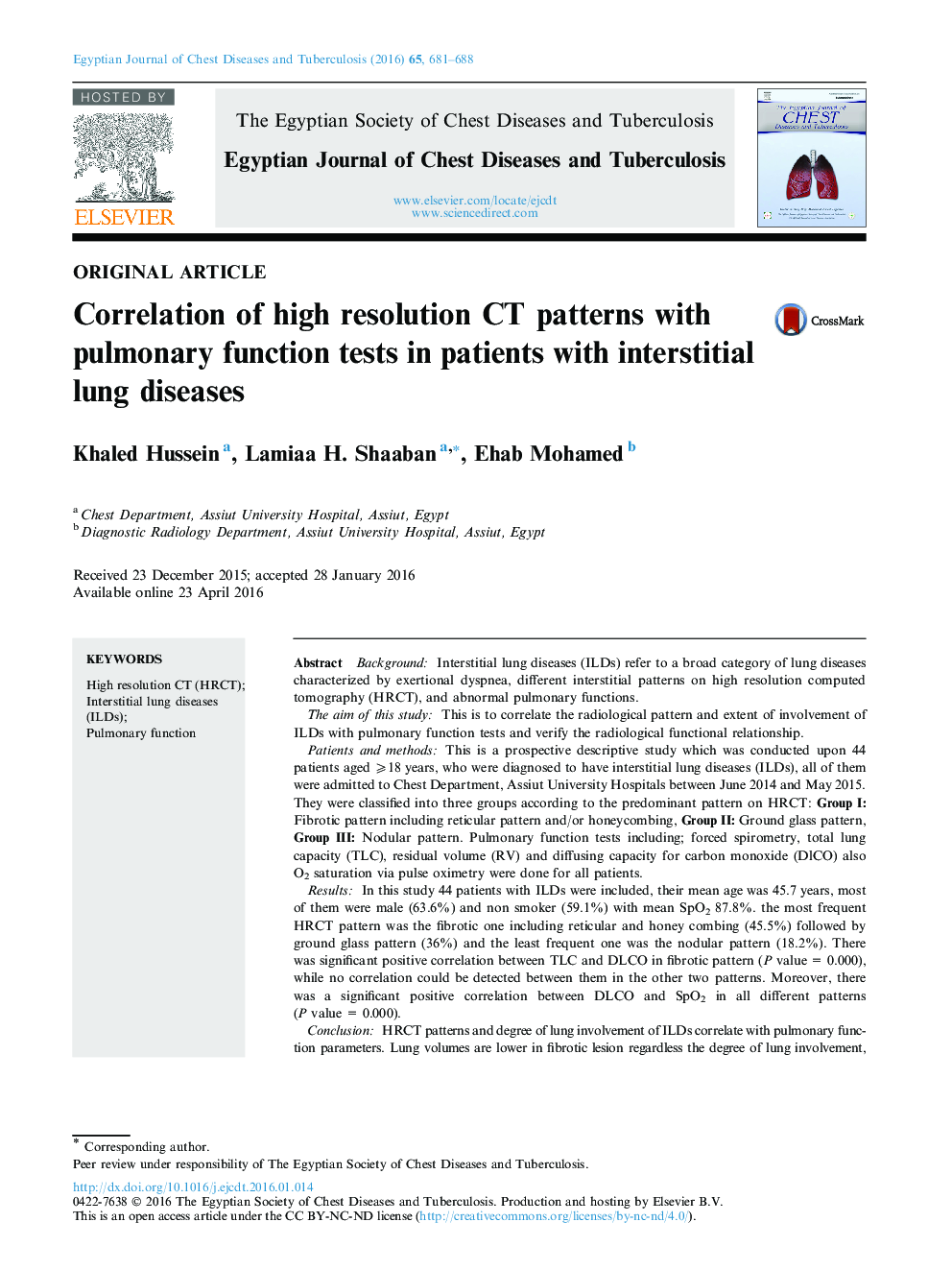| Article ID | Journal | Published Year | Pages | File Type |
|---|---|---|---|---|
| 3399832 | Egyptian Journal of Chest Diseases and Tuberculosis | 2016 | 8 Pages |
BackgroundInterstitial lung diseases (ILDs) refer to a broad category of lung diseases characterized by exertional dyspnea, different interstitial patterns on high resolution computed tomography (HRCT), and abnormal pulmonary functions.The aim of this studyThis is to correlate the radiological pattern and extent of involvement of ILDs with pulmonary function tests and verify the radiological functional relationship.Patients and methodsThis is a prospective descriptive study which was conducted upon 44 patients aged ⩾18 years, who were diagnosed to have interstitial lung diseases (ILDs), all of them were admitted to Chest Department, Assiut University Hospitals between June 2014 and May 2015. They were classified into three groups according to the predominant pattern on HRCT: Group I: Fibrotic pattern including reticular pattern and/or honeycombing, Group II: Ground glass pattern, Group III: Nodular pattern. Pulmonary function tests including; forced spirometry, total lung capacity (TLC), residual volume (RV) and diffusing capacity for carbon monoxide (DlCO) also O2 saturation via pulse oximetry were done for all patients.ResultsIn this study 44 patients with ILDs were included, their mean age was 45.7 years, most of them were male (63.6%) and non smoker (59.1%) with mean SpO2 87.8%. the most frequent HRCT pattern was the fibrotic one including reticular and honey combing (45.5%) followed by ground glass pattern (36%) and the least frequent one was the nodular pattern (18.2%). There was significant positive correlation between TLC and DLCO in fibrotic pattern (P value = 0.000), while no correlation could be detected between them in the other two patterns. Moreover, there was a significant positive correlation between DLCO and SpO2 in all different patterns (P value = 0.000).ConclusionHRCT patterns and degree of lung involvement of ILDs correlate with pulmonary function parameters. Lung volumes are lower in fibrotic lesion regardless the degree of lung involvement, while DLCO among different patterns were dependent upon the degree of lung involvement. Restrictive pulmonary dysfunction correlate with gas exchange in fibrotic pattern while in ground glass one, gas exchange is independent on lung volumes.
